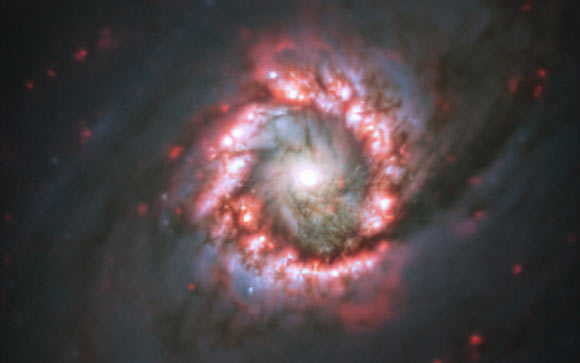Using the Multi Unit Spectroscopic Explorer (MUSE) instrument on the Very Large Telescope (VLT) at ESO’s Paranal Observatory, astronomers have imaged a 5,000-light-year-wide star-bursting ring in the center of the barred spiral galaxy NGC 1097.
NGC 1097 lies in the southern constellation Fornax at a distance of only 45 million light-years.
This galaxy was discovered by the German-British astronomer William Herschel on October 9, 1790.
Also known as Apg 77, ESO 416-20, LEDA 10488 and UGCA 41, it is a relatively bright barred spiral galaxy, seen face-on.
At magnitude 9.5, and thus just 25 times fainter than the faintest object that can be seen with the unaided eye, it appears in small telescopes as a bright, circular disk.
The galaxy hosts a black hole approximately 140 million times more massive than our Sun.
Continued...
Source
NGC 1097 lies in the southern constellation Fornax at a distance of only 45 million light-years.
This galaxy was discovered by the German-British astronomer William Herschel on October 9, 1790.
Also known as Apg 77, ESO 416-20, LEDA 10488 and UGCA 41, it is a relatively bright barred spiral galaxy, seen face-on.
At magnitude 9.5, and thus just 25 times fainter than the faintest object that can be seen with the unaided eye, it appears in small telescopes as a bright, circular disk.
The galaxy hosts a black hole approximately 140 million times more massive than our Sun.
Continued...
Source






















